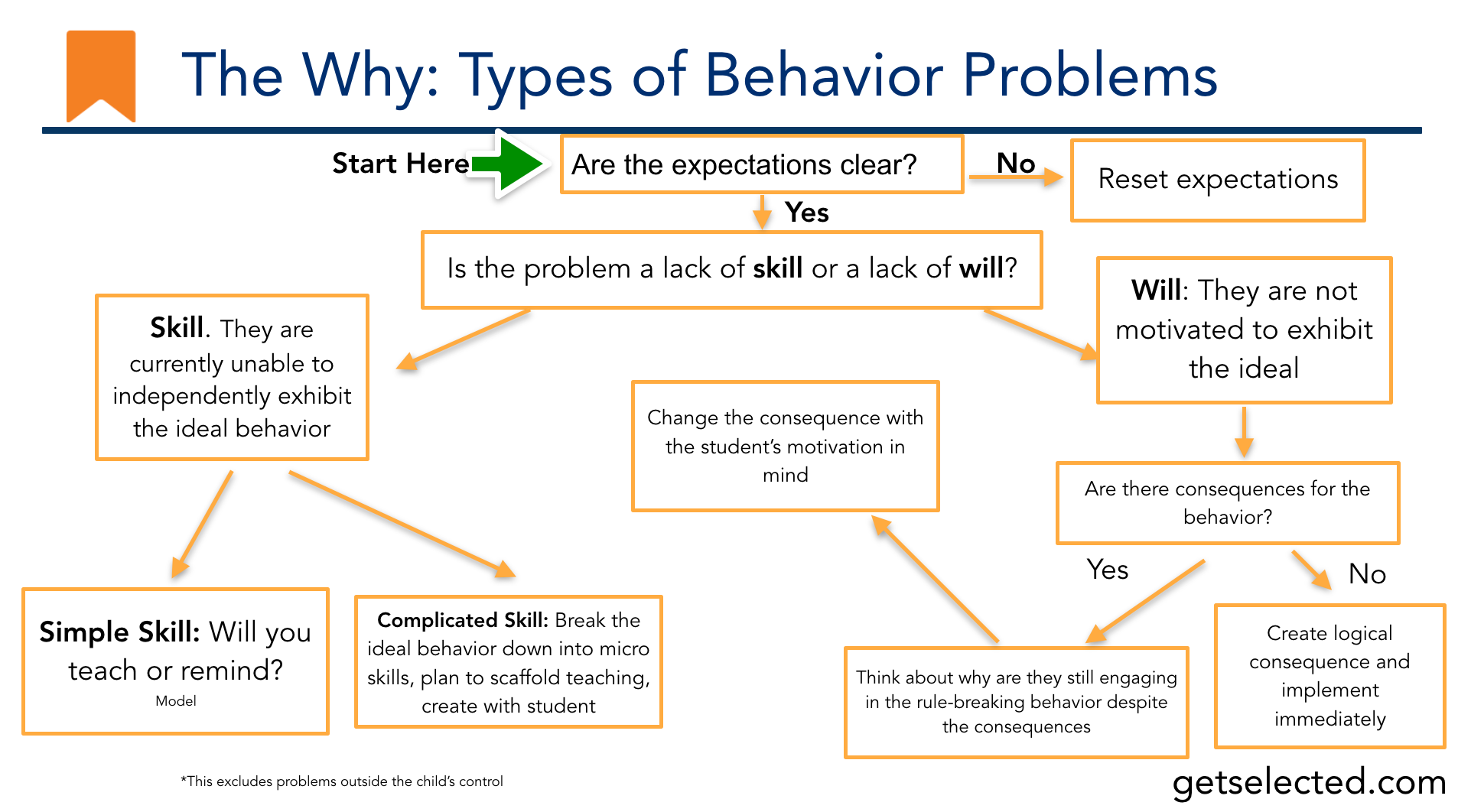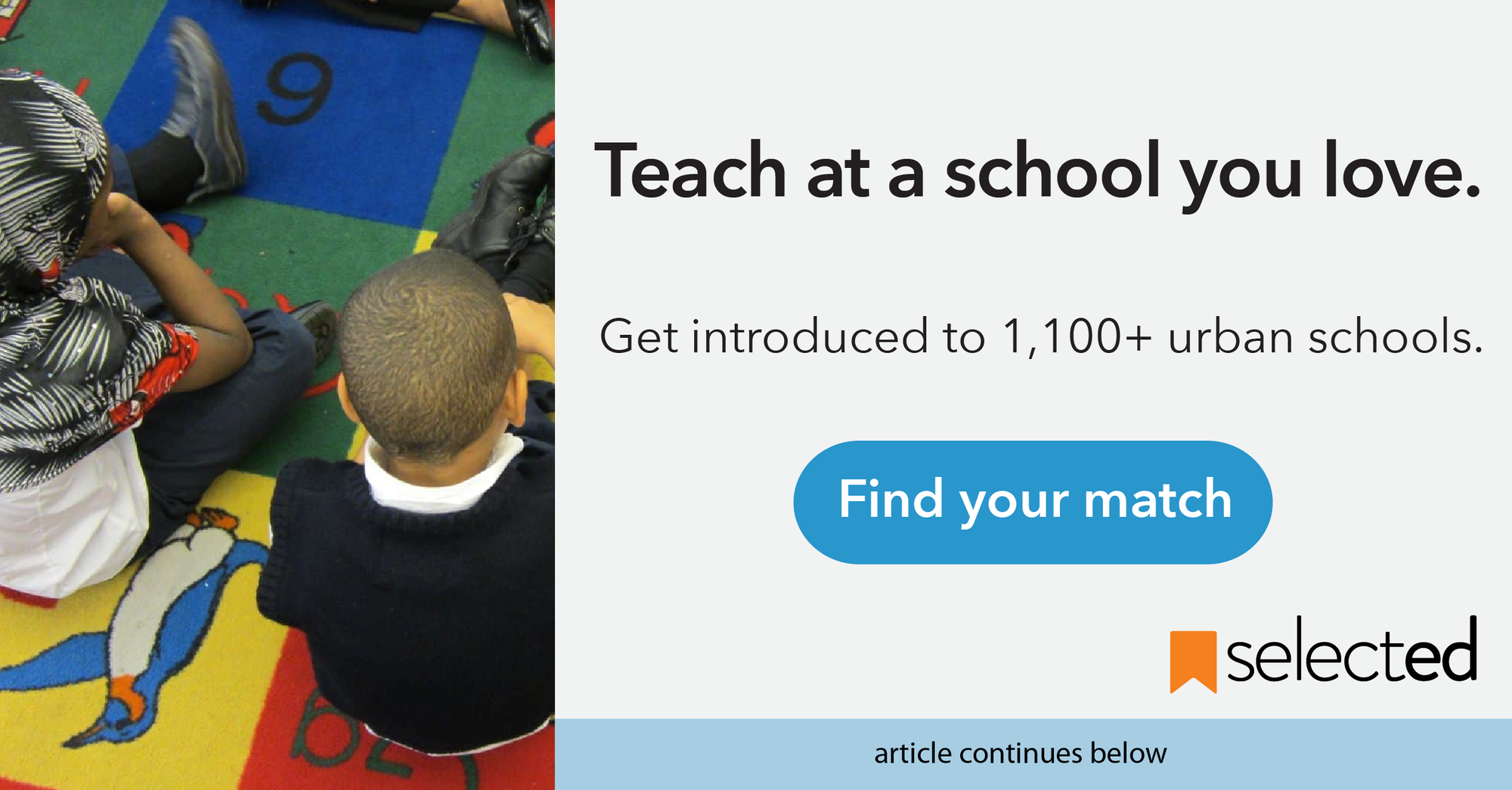Determine Effective Consequences for Students: Ask Yourself Two Questions
Prior to implementing any consequences to address student misbehavior, always ask yourself these two important questions: 1) Are students aware of what they should be doing, and how? 2) If so, is non-compliance due to a lack of skill or lack of will?

We’ve all been there — it’s 2:10 in the afternoon, students should be silent but are talking and minimally engaged with the assignment. Jaylin is out of her seat again, and you are hungry, tired, and have two hours of prep work to look forward to after school. The last thing you want to do is reflect on the “why” behind the students’ behavior.
But this is the first thing you should focus on. What you do during these crucial moments will determine who you truly are as a teacher. So it is important to think before you act.
Prior to implementing any consequences, always ask yourself these two important questions: 1) Are students aware of what they should be doing, and how? 2) If so, is non-compliance due to a lack of skill or lack of will?
The common sequence of events is this: The student breaks a rule, the teacher corrects or addresses the behavior, and the teacher enforces a consequence. There is nothing wrong with this sequence if (and this is a big if) the students thoroughly understand what the expectations are prior to the rule-breaking incident and actually can meet the expectations successfully. Most of the time, this is not the case.
When teachers are tired, frustrated, or overworked (which is often), and students fail to comply with rules — the tendency is to assume that students know what they should be doing and are perfectly capable of doing it (e.g., “I tell them to be nice to each other every day, they should know...”, “He is focused during math time, so why can’t he do that during reading?”). But do students really know? Are the expectations actually clear? And just as importantly, can they actually meet the expectations, or do they need your support?
When a student breaks a rule, they are giving us information. We can then choose to analyze this information and use it to make a logical decision that will solve the problem long-term, or we can react and try to solve the problem short-term. It’s best to choose the former.
When a student or students break a rule — take a step back for a second. Don’t react. Take a deep breath. Refer to the flow chart below and ask yourself the questions below:

Question 1: Are the expectations clear?
In other words, are the students aware of what they should be doing and how they should be doing it? If the answer is "yes," move on to Question 2.
If the answer is "no," reset the expectations and do not move on until the expectations are clear. If students do not know what they are supposed to be doing, you can not fairly give them a consequence.
Let’s explore by using an example: You tell students to stop talking and hand in their homework, and two minutes later the students are still talking. Some are still getting their work out of their backpacks, some are on their phones, and only half have completed the task.
Your instinct might be to address the class, “I asked you to turn in your homework. That shouldn’t take this long. Now this is cutting into our work time.”
But before you do, ask yourself — are the expectations clear? In this case, they aren’t. The teacher never taught or modeled a specific routine for handing in homework, and did not set a time limit. It is not fair to reprimand, give consequences, or even get frustrated with the students when the expectations were never made clear.
This is similar to your principal asking you to submit a lesson plan with no instructions on format or submission date, then sending you an email telling you that it’s late and executed poorly. It’s unfair.
How do you make sure students are aware of your expectations? Clear directions should be given with the students’ undivided attention, assignments should be posted, and helpful charts should be displayed.
For routines, such as passing papers, lining up, or getting into groups — interactive modeling should be used. In lower grades, routines should have anchor charts with visual aids to help students.
You may be the the type of teacher who expects that when you say something once the students will listen, and there is no need for interactive modeling, charts, or visible directions. This is wonderful (and you must be some sort of teacher wizard)! But in order to create that kind of environment, it takes teaching, modeling, and practice. Students must be taught to listen to directions the first time, and this must be a rule that is referred to constantly — until it becomes a clear expectation in your class.
Once expectations are made clear to the students, move on to Question 2.
Question 2: Is the problem due to a lack of skill or lack of will?
This is a tough one to determine. I have found that the tendency of a teacher is to assume a lack of will rather than lack of skill. In other words, thinking, “They are perfectly capable of doing it, they just choose not to.” Unfortunately, teachers often don’t realize that the problem is due to a lack of skill until they try enforcing consequences and the behavior does not change. The easiest way to determine this is by asking yourself, “If this child were motivated, would they be able to exhibit the ideal behavior?”
Lack of Skill
For every routine, procedure, or assignment, there are countless micro-skills involved that work together to ensure the student can successfully complete the task. If the student is unable to carry out any or all of these micro-skills independently, the problem is a lack of skill and must be treated accordingly.
Example: After a writing lesson, Luis goes back to his desk and does nothing for 5-10 minutes while all of the other students are writing. You usually approach him, sit next to him, and scaffold the process to support him until he comes up with an idea to begin writing.
This is a problem for you because you are devoting seven minutes of your time to one student when there are 29 others, several of whom need your support more than Luis does because they are further behind academically.
Let’s say the problem is due to a lack of skill. Luis really has trouble thinking of something to write about. You then need to determine whether it’s a simple skill (e.g., keeping your hands to yourself) or a complex skill (e.g., being a good sport):
- Simple skill: Build in a strategy or provide a tool so that the student can carry out the task independently. In the previous example, either make sure Luis has an idea before he goes back to write (by having him interact during the lesson) or provide a “how to come up with ideas” cheat sheet that he keeps in his folder.
- Complex skill: These need to be broken down into simpler skills and mastered one-by-one in order to be tackled.
Example: A student has a great deal of difficulty working with other students. You’ve determined that the problem is due to a lack of skill because she often expresses how she wants friends and doesn’t have any. She picks fights with some students, teases, refuses to do her share of work, and nobody in the class wants to work with her. It’s clear that just saying, “Work nicely with your group!” will be ineffective because she lacks the skills to work nicely with a group.
In this case, the problem needs to be broken down into simpler skills (e.g., sharing, listening, using kind words, and staying on task) and taught one at a time. As she masters each micro-skill, move on to the next.
Lack of Will
If the problem is due to a lack of will, your next question is: Are there consequences in place for this behavior? If there aren’t consequences in place, create and/or enforce consequences right away. This will most likely fix the problem.
If there are consequences in place, explore why the student is still exhibiting the behavior. Most likely, the behavior and resulting consequences are either benefitting the student somehow, or they are indifferent to the consequences. Your job is to find out which, then change the consequence.
This happens more often than you might think. When you were a child, maybe you were sent to your room as a punishment, but within those walls there were toys, a TV, computer, phone, etc. Perhaps the consequence is that you take a privilege away, but the privilege isn’t one they particularly care about (e.g., you keep a student with you at lunch to finish their work, which they appreciate because they have been getting teased during lunch). Bottom line — if the child prefers or is indifferent to the consequence, it’s going to make them more likely to break the rule. If this is the case, change the consequence.
Lack of Skill and Will
Occasionally, you will find that the student lacks both skill and will, and what a difficult combination this is. You most likely have at least one student who fits this description — they don't have the will to try because the task is overwhelmingly difficult. If and when this happens, which do you address first? The skill, always. Turn the “can’t” into a “can.”
Regardless of which route you follow, the most important thing is that you are constantly evaluating your actions, student actions, and the outcomes for effectiveness. You might find that what you originally thought was a question of will is actually a matter of skill. In other words, if what you are doing isn’t working — think about why, refer back to the Flow Chart, start over, and set a new plan. Great teachers don't always make the correct decision. But great teachers do consistently seek to improve. Decide to be great!
About Selected
Selected helps teachers find jobs at schools they love. We offer a free school matching and career support platform for teachers that connects them with 1,100+ PK-12 public and independent schools in urban metro areas in the Northeast and West Coast, including New York City, NJ, CT, Philadelphia, Washington DC, Boston, and Los Angeles. Make a FREE profile and start speaking with hiring schools immediately!





